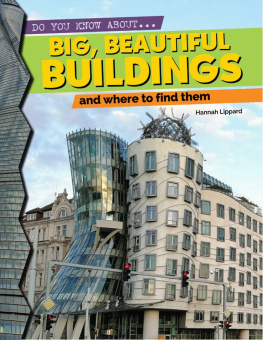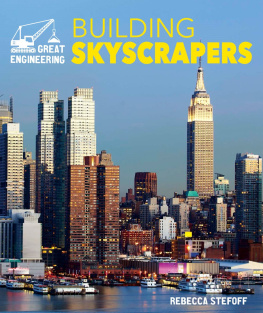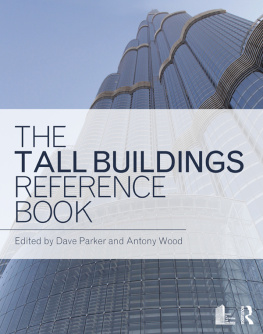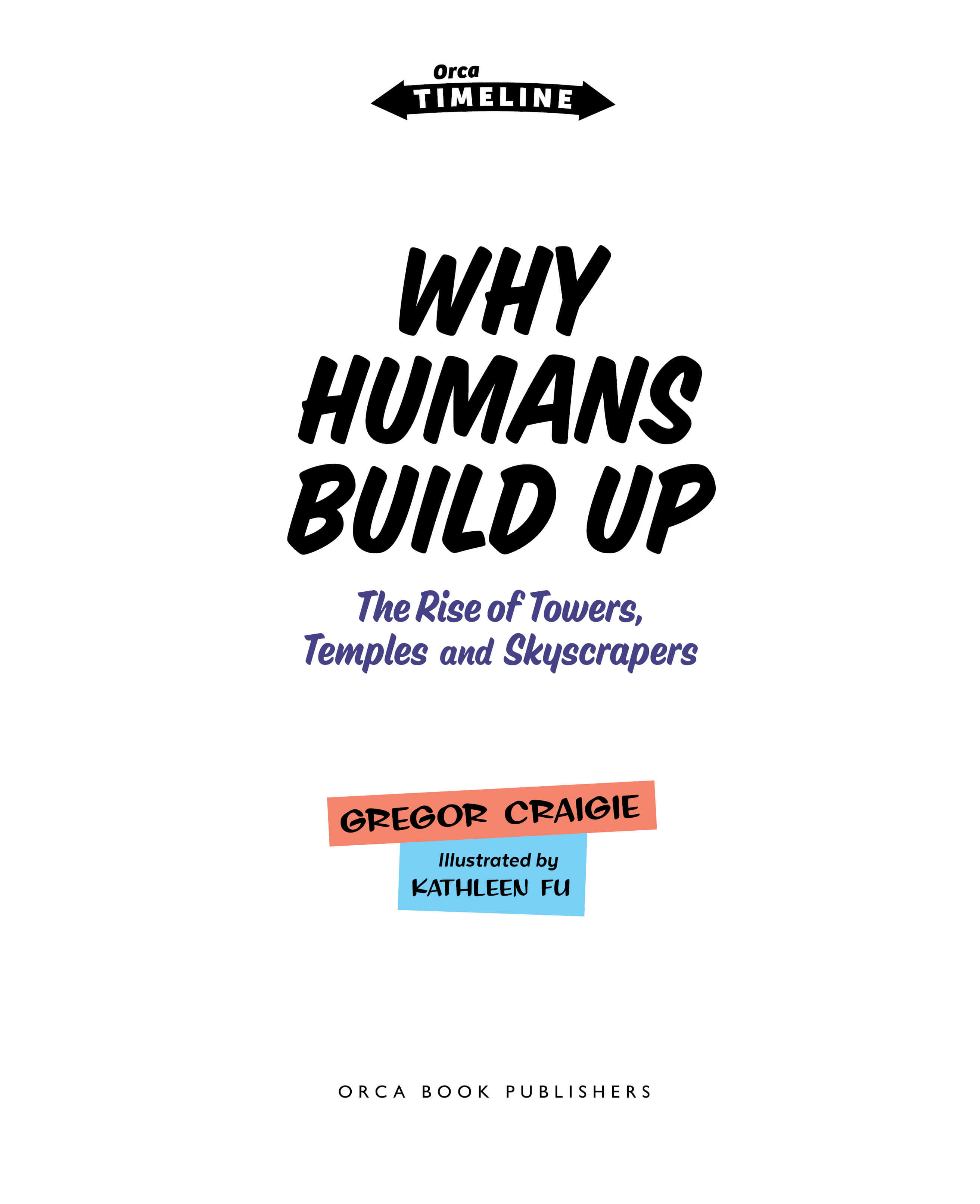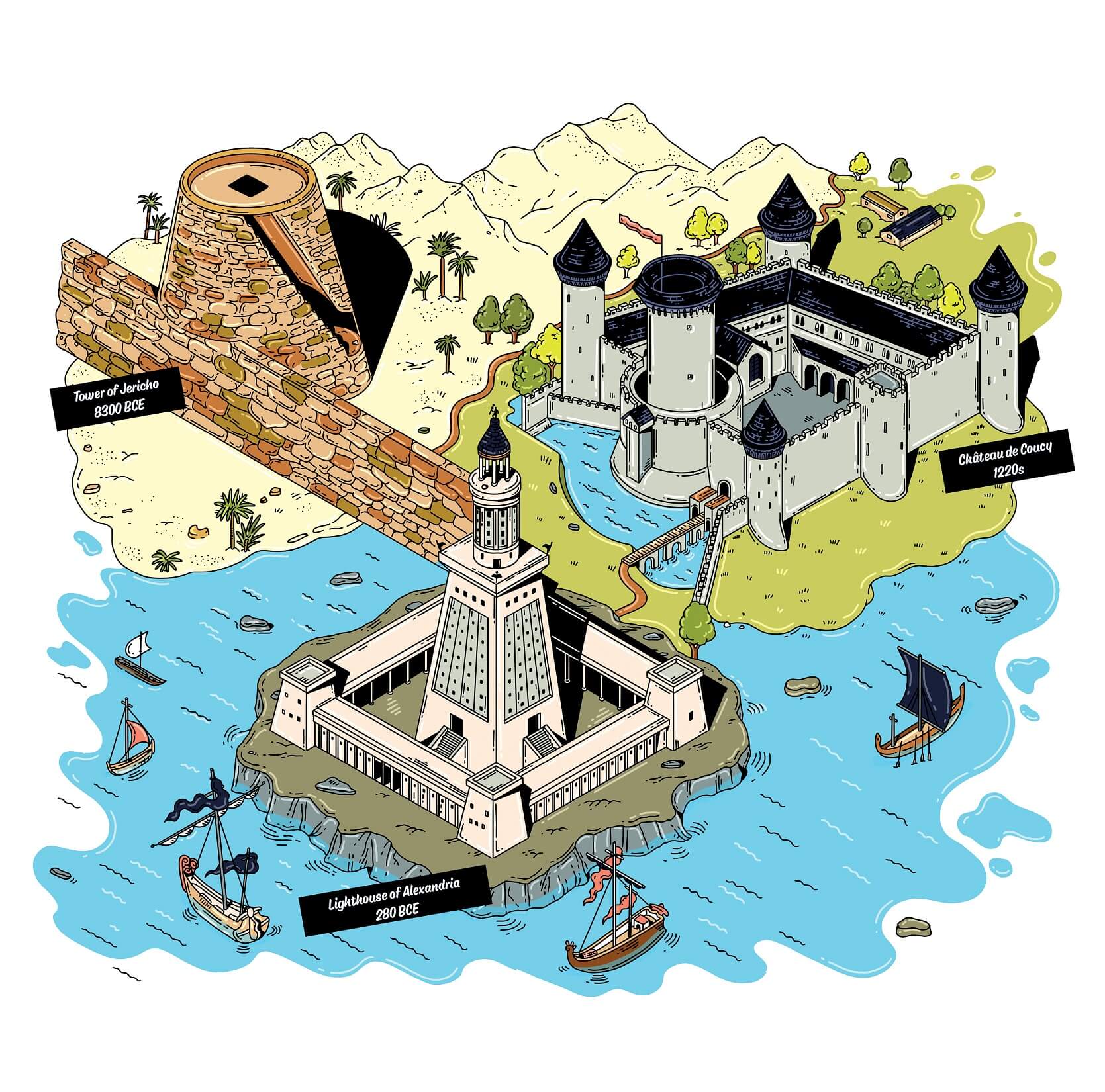Text copyright Gregor Craigie 2022
Illustrations copyright Kathleen Fu 2022
Published in Canada and the United States in 2022 by Orca Book Publishers.
orcabook.com
All rights reserved. No part of this publication may be reproduced or transmitted in any form or by any means, electronic or mechanical, including photocopying, recording or by any information storage and retrieval system now known or to be invented, without permission in writing from the publisher.
Library and Archives Canada Cataloguing in Publication
Title: Why humans build up : the rise of towers, temples and skyscrapers / Gregor Craigie ; illustrated by Kathleen Fu.
Names: Craigie, Gregor, author. | Fu, Kathleen, illustrator.
Description: Series statement: Orca timeline ; 1 | Includes bibliographical references and index.
Identifiers: Canadiana (print) 20210352469 | Canadiana (ebook) 20210352485 | isbn 9781459821880 (hardcover) | isbn 9781459827172 ( pdf ) | isbn 9781459827189 ( epub )
Subjects: lcsh : Tall buildingsJuvenile literature.
Classification: LCC NA 6230 .C 73 2022 | DDC j720/.483dc23
Library of Congress Control Number: 2021948635
Summary: Part of the nonfiction Orca Timeline series, with photographs and illustrations throughout. This book explores why and how people have constructed taller and taller buildings over the course of human history.
Orca Book Publishers is committed to reducing the consumption of nonrenewable resources in the production of our books. We make every effort to use materials that support a sustainable future.
Orca Book Publishers gratefully acknowledges the support for its publishing programs provided by the following agencies: the Government of Canada, the Canada Council for the Arts and the Province of British Columbia through the BC Arts Council and the Book Publishing Tax Credit.
The author and publisher have made every effort to ensure that the information in this book was correct at the time of publication. The author and publisher do not assume any liability for any loss, damage, or disruption caused by errors or omissions. Every effort has been made to trace copyright holders and to obtain their permission for the use of copyrighted material. The publisher apologizes for any errors or omissions and would be grateful if notified of any corrections that should be incorporated in future reprints or editions of this book.
Author photo by Rebecca Craigie
Illustrator photo by Diego Zabala
Cover and interior artwork by Kathleen Fu
Design by Rachel Page
Edited by Kirstie Hudson
25 24 23 22 1 2 3 4
For Lochlan, Benji and Charlie, who are always looking up and always asking, Why?
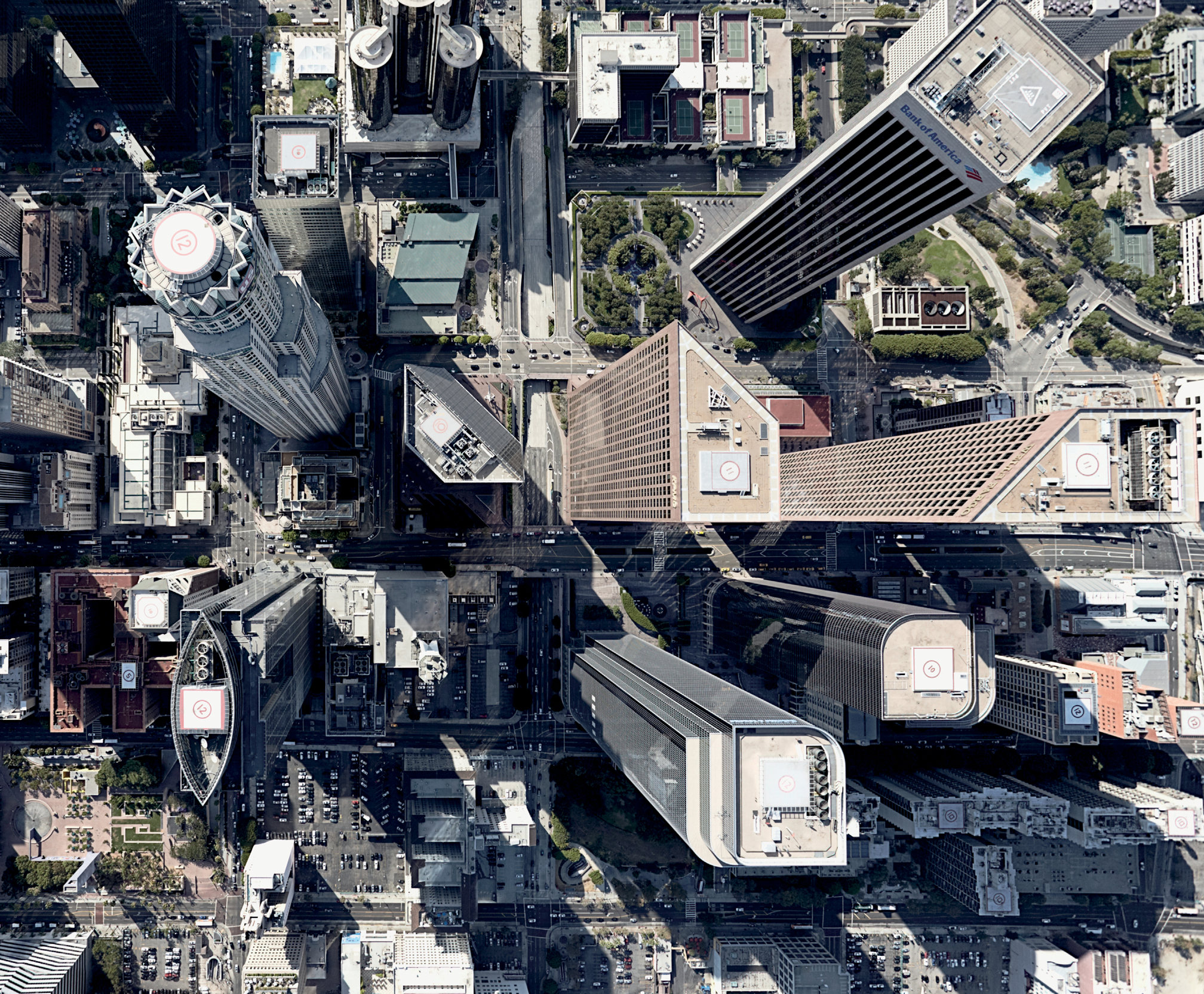
Markus Hanke/Getty Images
Orca Book Publishers is proud of the hard work our authors do and of the important stories they create. If you are reading this book and did not purchase it or did not check it out from a library provider, then the author has not received royalties for this book. The ebook you are reading is licensed for single use only and may not be copied, printed, resold or given away. If you are interested in using this book in a classroom setting, we have digital subscriptions with multi user, simultaneous access to our books, or classroom licenses available for purchase. For more information, please contact .
ivaluecanadianstories.ca
Introduction
I can still remember the first time I saw a skyscraper. I was five years old and sitting in the back seat of my dads car. We drove over the top of a hill and I saw what looked like a giant white rocket, about half a mile (one kilometer) in front of us. It had a big red ring near the top and looked like a steel needle pointing straight up at the sky.
Whats that? I asked.
Thats the Calgary Tower, my dad replied. Its the tallest building in the city.
The tower was only five years older than me, and it looked modern, new and impossibly high. I pressed my cheek up against the glass as we drove past and tried to look straight up the long, smooth concrete cylinder. It was so high!
I peppered my dad with questions for the rest of the car ride and for weeks after. How tall is it? How did they make it? Whats at the top? Will it fall over? The questions kept coming until he finally took me and my sister to visit the tower. The elevator took about a minute to lift us to the viewing deck, almost 620 feet (190 meters) above the ground. When we looked out the big windows I was amazed by the incredible views. I could see the tops of all the other big buildings surrounding the tower, thousands of houses beyond them and the spectacular Rocky Mountains off in the distance.
I have been interested in tall towers ever since that day. But it wasnt until I grew up and became a dad myself that I really started to wonder why we build them. I was showing my sons a photo of the Burj Khalifaa skyscraper in Dubai that is four times taller than the Calgary Towerwhen one of them asked me a simple question. Why did they make it so high?
Thats a good question, and one that could be asked of every tall building thats ever been built.
One of the biggest reasons for going high today is because the worlds population is growing. With more people, we will need more space for those people to live, learn and work in. At the same time, its important to preserve what wilderness we have left, like the forests and jungles that provide habitat for endangered species and act as carbon sinks, removing the greenhouse gas carbon dioxide from the air.
But there are many more reasons why people have been building tall structures for centuries. Castle walls kept people on the inside safe. Utility towers transmitted television and mobile phone signals. And observatories gave people a birds-eye view of what surrounded them. There are some good reasons for building up, and a few bad ones as well. But its worth thinking more about why were doing it, because its safe to assume we will have to keep building higher in the future.
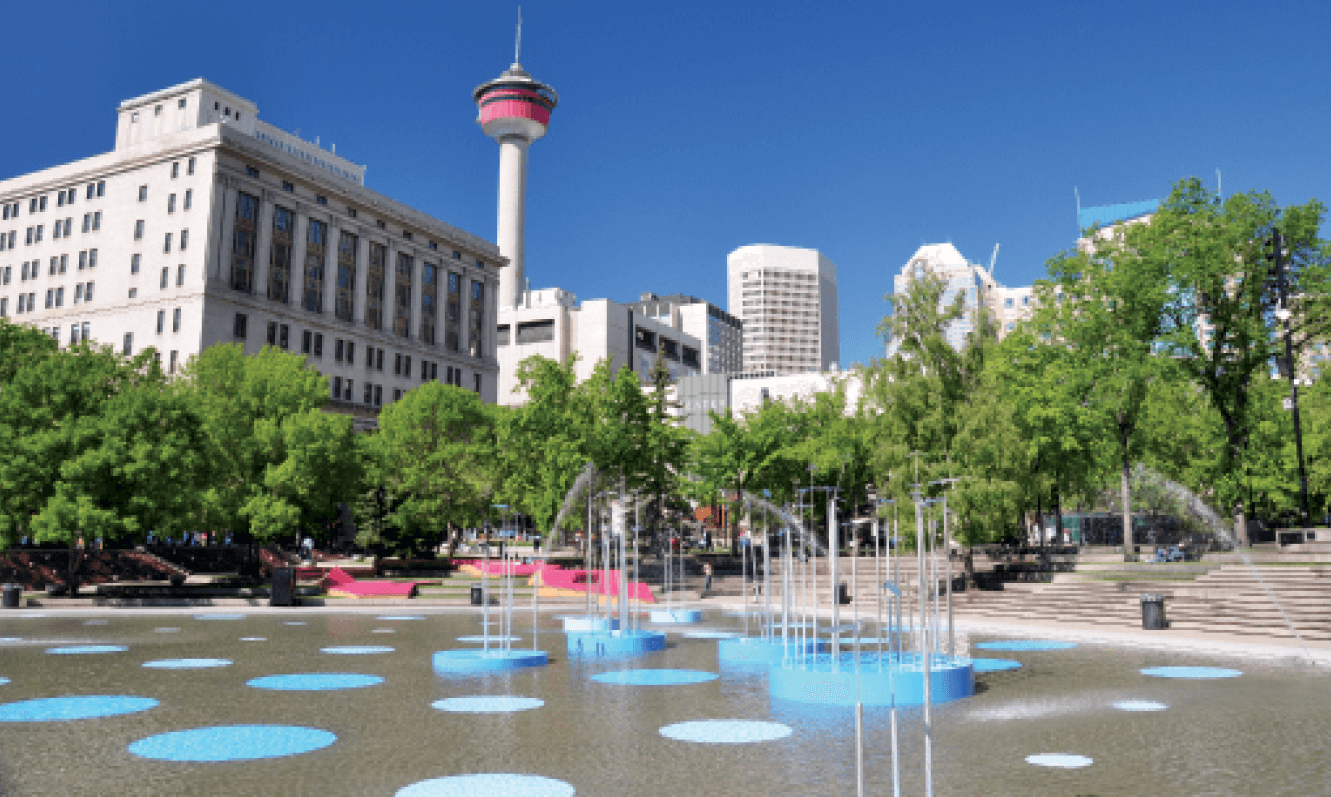
The Calgary Tower was built in the 1960s to celebrate Canadas centennial and bring tourists into Calgarys downtown core. abdallahh from Montral, Canada/Wikimedia Commons/CC BY 2.0

When it was first built, the 626-foot (191-meter) reinforced-concrete observation tower was the tallest building in Calgary. Its no longer the tallest, but it is still prominent on the citys skyline. Y Du Jin Ye / EyeEm/Getty Images
One
Security
Building Tall to stay safe
S kyscrapers look like modern inventions, with striking vertical lines of glass and steel stretching high into the sky. Most architects and historians agree that the first skyscrapers were built in Chicago and New York in the late 1800s and most of the really high towers were built in the last few decades. But people have been building tall structures for thousands of years. And one of the very first reasons was for securitypeople built tall structures to keep themselves safe.






